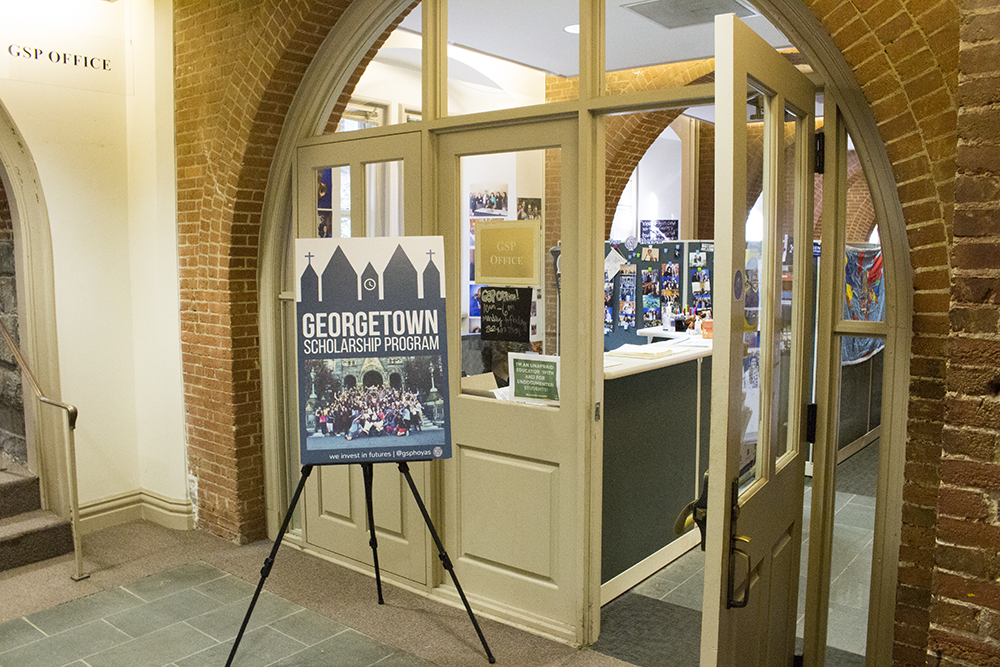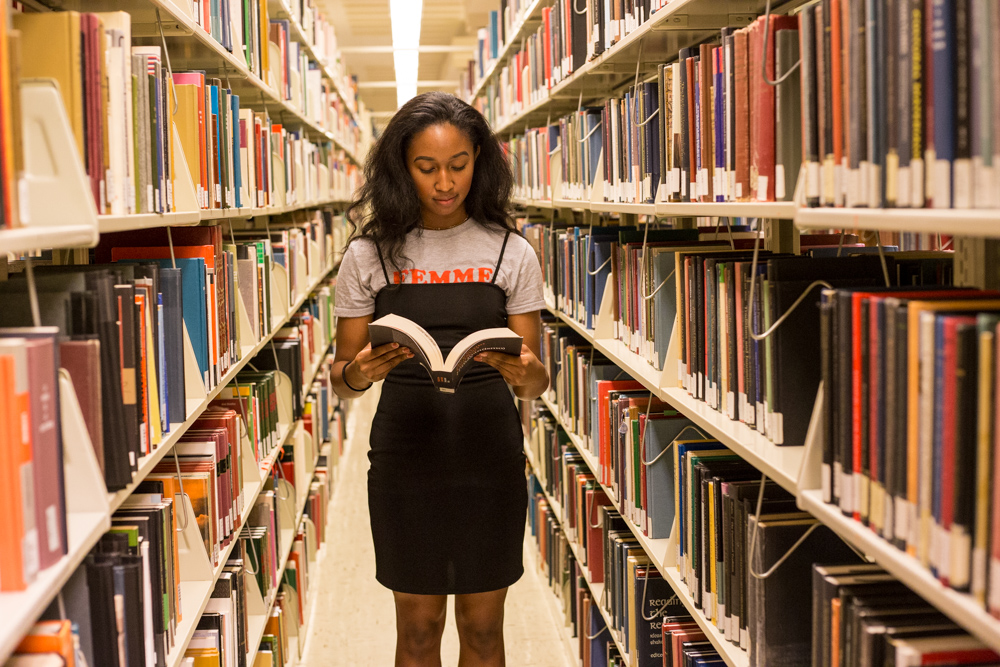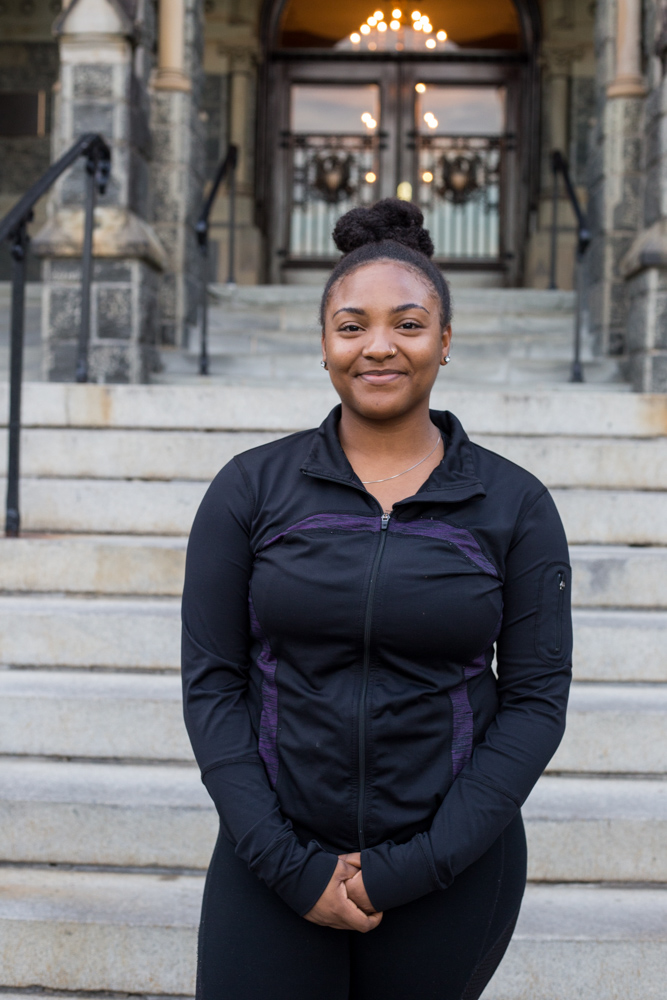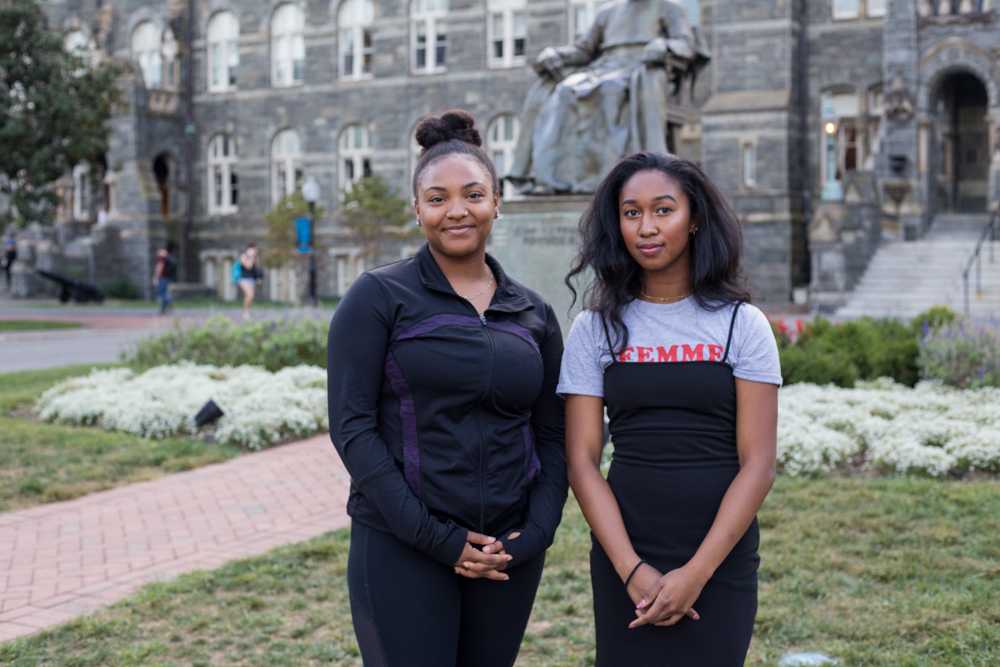
The Georgetown Scholarship Program offers support to 650 students, most of whom are first-generation, to attend college.
Like many Georgetown University students, Teodora Lancaster (COL ’20) expected her time on the Hilltop to be a balancing act of classes, internships, healthy social outings and sightseeing.
But just over a year into her time at Georgetown, Lancaster is coming to understand the severe constraints imposed by her financial situation.
“There had been a good amount of times where I wondered if I belonged here. At times, I felt out of place because a lot of students on this campus have money and make sure that you know it,” Lancaster said.
Having grown up in southern California as the youngest of five children, Lancaster said her single mother struggled financially while raising her. Working on and off during Lancaster’s childhood, her mother endured financial strains due to her children’s education bills and her late husband’s medical expenses.
Lancaster remembers a time during her freshman spring semester when the cost of academic materials and stress pushed her to a breaking point.
“I was tackling two jobs and five classes. Two of my courses were extremely difficult for me and although I sought out help from the free resources offered on campus, it wasn’t enough,” Lancaster said. “I also did not have enough money to purchase all the necessary textbooks that I needed so I struggled to keep up because I didn’t even have a book to refer to.”

Teodora Lancaster (COL ’20) struggled to find adequate academic and financial resources her freshman year. She reached a breaking point when she struggled to balance her classes and working to afford her textbooks.
Lancaster was juggling a front desk assistant work-study job at the Georgetown University Medical Center while volunteering for Jumpstart, a national early education organization that aims to provide children from low-income families with tutoring and emotional support. But her work-study job prevented her from receiving an income at Jumpstart, forcing her to work 300 hours over 26 weeks last semester to win an educational grant of $1,221 from Jumpstart to pay off part of her student loan.
“It sucked because it would take time away from my studies, but I would say, ‘I need to work towards this time because I need to get this amount of hours to get the money I need to pay off my loan,’” Lancaster said.
She is not alone. Lancaster represents a larger group of students on campus who need greater institutional and financial support but were not granted entry to the university’s largest resource for financially disadvantaged students, the Georgetown Scholarship Program.
Faced with steep student loans, expensive flights home, meal and educational expenses and difficult family situations, these students can struggle to support themselves financially due to the high cost of living at Georgetown. With no institutional support system, these students end up missing out while on the Hilltop.
The Income Gap
Established in 2004, the Georgetown Scholarship Program was created to combat the hurdles students like Lancaster often encounter on a campus where 51 percent of students come from the top 5 percent of the country’s wealthiest families. The program targets students who are among the first generation of their families to attend college and seeks to provide institutional support for students once on campus.
A January study by The New York Times found that Georgetown has consistently provided greater access to students from families in the top 20 percent than the lower 80 percent of families in the country over the last 10 years.
Seventy-four percent of Georgetown students are from families with an income in the top 20 percent while only 3.1 percent of Georgetown students come from the bottom 20 percent. The median income for a Georgetown family stands at $229,100.
The study categorizes Georgetown as an elite college and reports it to have the sixth highest median parent income when compared with 65 of its peer institutions such as Tufts and Vanderbilt.
Lancaster said she experienced the effects of this economic gap and believes many students may try to hide their financial hardships to fit in at Georgetown.
“I know that there are other students who have faced the same or even worse hardships than I have but it’s still something hard for me to discuss or even believe that people can relate because I feel as if many put up a mask to hide this,” Lancaster said.
Selah Shackelford (COL ’19) said she chose Georgetown because of its unmatchable financial aid offer. One of three sisters from Inglewood, Calif., she witnessed an evident socio-economic gap from a young age. However, as with Lancaster, the financial support did not completely eliminate the high cost of living on campus.
“I would stay on campus for some breaks and especially sophomore year where I stayed on campus for all breaks,” Shackelford said. “It was hard buying food. I had a job but I wasn’t making enough money.”

Selah Shackelford (COL ’19) said Georgetown’s financial aid package facilitated her decision to study on the Hilltop, but the high cost of living prevented her from going home throughout her entire sophomore year.
Lancaster had never even heard of GSP before setting foot on campus.
“When I first heard about GSP, I immediately thought, ‘Well, don’t I qualify for that?’ and wanted to be a part of it for both the financial support and the community support as well as their resources,” she said.
Only 9 percent of children born in the bottom income quartile will graduate from college. A 2015 Pell study compiling 45 years of economic research on social mobility finds wealthier students are eight times more likely to graduate college.
“Your socio-economic background is your destiny in our country right now, and that’s not fair,” GSP Director Missy Foy (COL ’03) said.
The School’s Support
GSP has served over 1,400 students since its inception. Currently the program caters to over 650 undergraduates, including 172 first-year students. Over 70 percent of GSP’s current students are first-generation.
Foy has worked with GSP college student since the beginning. Originally made up of 50 students and created to raise money to offset student loans, GSP has grown into an essential support network for many first-generation students on campus.
“We are looking at all aspects of the Georgetown experience from the day that you are admitted to the day that you graduate,” Foy said. “The idea is ‘where can we eliminate barriers’ because we want to make sure that Georgetown as an institution isn’t giving students a ladder to get over barriers but really focusing on knocking down barriers.”
Among the benefits GSP offers to its members are financial support for flights home, groceries, winter clothes and textbooks, as well as professional development opportunities like networking opportunities and job counseling.
The Selection Process
Students are not strictly admitted to Georgetown as GSP students, but rather as students on their own merit. Once they pass the admissions process all low-income candidates face a GSP committee selection phase. Throughout this time, candidates have no knowledge of the debates happening behind the scenes.
After all accepted students have received their decision letters in April, students are reviewed for GSP’s 1789 Scholarship or other benefits. Representatives from GSP, the admissions office and the Office of Student Financial Services meet to review candidates.
“All first-generation students who are admitted to Georgetown are reviewed for consideration and given very serious consideration because the focus of our program is first-generation students,” Foy said.
Foy said GSP works very closely with the financial aid and admissions offices to select students who they think will be living on the tightest budget while on campus.
“We meet the full financial need of admitted students, so even if you are not selected for GSP, the idea is that your full financial need would be met through a combination of scholarship, parent contribution, student contribution, work-study and loans,” Foy said.
But GSP is strapped for resources. Originally supposed to accept 150 students from each year’s incoming class, Foy and her team are currently serving 172 first-year students.
After the GSP committee review, students like Lancaster and Shackelford end up not gaining access to GSP benefits and receive whatever financial aid package the university offers.
Foy said the resources GSP has available limit the program from serving the full need students have on campus right now and said she worries some of these institutional limits force students like Lancaster and Shackelford to be left out.
“There are students that we have reviewed for GSP who we were not able to select because we didn’t have enough scholarship to reduce their loan,” she said. “For very compelling cases you don’t want to leave those students out.”
Dean of Undergraduate Admissions Charles Deacon (CAS ’64, GRD ’69) said he understands why GSP must widen its reach.
“There are probably more people here who could legitimately benefit from [GSP] than actually are benefitting from it even though I don’t think there are many more. But there could be many more,” Deacon said. “Missy and her team try really hard not to exclude anyone who might need support or want it but it’s not just an unlimited resource that anyone who wants to can be part of.”
Deacon is currently preparing for the university’s next fundraising campaign to increase GSP’s reach and alleviate outlier cases through an endowment. Launched last year, GSP’s endowment fundraising has secured $19 million of a $25 million target.
Deacon said GSP is set to reach this target in two years.
Foy said her team often struggles to offer help to students who would fit into the GSP family but are not offered financial assistance.
“They are walking around on this campus and I think that is a real ethical and moral dilemma,” Foy said. “Do you reach out to them and say get involved in the program? Or is it a slap in the face to say you’re not going to get the scholarship, and rather we should wait for students to reach out to us and we can say, ‘I can’t offer the scholarship but I can offer X, Y and Z instead.’”
Foy said doubling the size of GSP would mean students like Lancaster would not be missed in the initial selection phase.
The Next Step
This past summer Lancaster realized her inability to discuss her financial problems would only hold her back.
“After a certain point, I felt I needed to talk to an adult about this at the school,” Lancaster said.
GSP currently offers an honorary membership option, which is designed for students who did not initially gain entrance to the program but sought to gain access to certain benefits GSP offers.
Becoming a GSP honorary member requires completing an application and meeting with a GSP coordinator. Honorary members receive some of the support that full members are offered such as receiving GSP emails, gaining access to special events and the ability to apply for financial grants, but lack the financial aid and loan relief awarded to full GSP students.

Shackelford (left) and Lancaster (right) both consider the resources GSP can provide them as necessary for their success at Georgetown.
Both Shackelford and Lancaster ventured to apply for honorary membership. Shackelford was accepted at the end of the spring 2017 semester, and Lancaster is in the process of applying.
Shackelford said the experiences that some of her close friends in GSP shared with her pushed her to act.
“I had been having financial difficulties. It’s always hard for me to go home, little things that I struggle with financially that I can’t really do anything about,” Shackelford said. “I would just be thinking, ‘Wow, I’m in the same financial position as a lot of my friends and I should really think of joining’ because I saw the benefits where GSP really came through for them.”
Lancaster similarly is seeking to join GSP, as she sees the community as a necessary support system when she needs it most.
“I feel I would be exposed to a community that can help me, not just financially because they give need-based grants, but also emotionally,” Lancaster said. “It is really overwhelming at times to have to juggle school and work, and when I struggle it’s even harder for me to find the time to seek out the help that I need.”




















